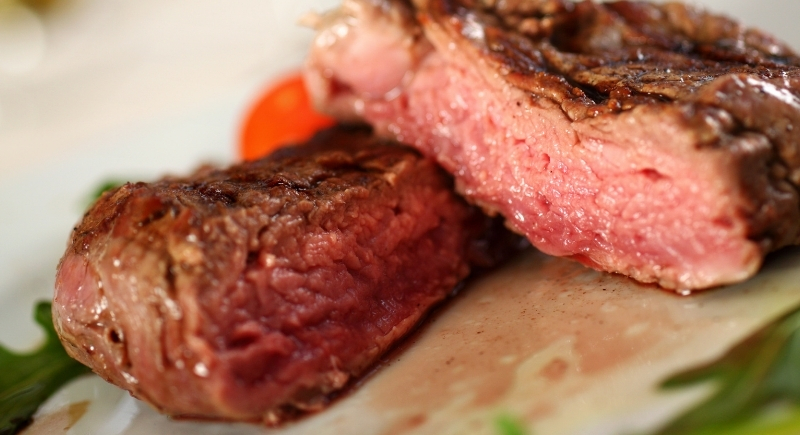The Real Reason Why Red Meat Is Red (It’s Not Blood)
Many people still believe the pink liquid that seeps from cooked steak is blood, but that’s a common misconception. The red color in both raw meat and the juices on your plate actually comes from a protein called myoglobin, which stores oxygen in muscle tissue. When heated, myoglobin changes color and gives cooked meat its familiar pink or brown hue. So that “bloody” look isn’t blood at all—it’s just science at work.
What’s Myoglobin

Image via Getty Images/gilaxia
The red liquid you see is mostly water mixed with myoglobin, a protein found in muscle tissue. Myoglobin stores oxygen inside muscles, similar to the way hemoglobin carries oxygen in blood. When it interacts with oxygen, myoglobin turns a reddish color. That’s why beef looks red before it’s cooked.
Animals that move more develop higher myoglobin levels. Cows are more active than chickens, which contributes to the darker color of beef. This difference is what separates “red meat” from lighter meats, such as poultry. Myoglobin doesn’t change flavor or safety. It’s a normal, harmless part of the meat’s natural makeup.
When you open a package of steak and see a red liquid pooling inside, you’re looking at that same mix of water and myoglobin, often called “purge.” It seeps out naturally as muscle fibers relax over time.
Vacuum-sealed or frozen meat may release more of this liquid because pressure or ice crystals push moisture toward the surface.
The color changes you notice—deep purple when freshly cut, bright red after exposure to oxygen, and brown after several days—are normal chemical reactions. Oxygen causes the red color to appear, and gradual oxidation darkens it.
These color shifts don’t signal spoilage. The most reliable indicator of freshness is still the smell and texture of the meat.
The Science Behind Color Changes During Cooking
Heat changes the structure of myoglobin. Around 140°F, the protein starts to lose its ability to hold oxygen. That’s why rare steak stays red, medium turns pink, and well-done meat becomes brown. These shades are simply the result of protein chemistry reacting to temperature, not any trace of blood.
The pink ring that sometimes appears in smoked meats comes from nitrogen compounds in the smoke bonding with myoglobin before it fully changes color. It’s a harmless reaction that creates the well-known “smoke ring” prized by barbecue enthusiasts.
By the time meat reaches a store or butcher counter, almost all of its blood has been removed. During processing, animals undergo a draining step known as exsanguination. This procedure is required for food safety because it limits bacterial growth and extends the freshness of the food. So that red liquid in your steak is mostly water and protein released during storage or cooking.
Cutting meat too soon after cooking releases more of its natural juices. Heat forces moisture toward the center, and slicing right away lets it escape onto the plate. Allowing the meat to rest for a few minutes gives the juices time to redistribute throughout the muscle fibers and keeps the steak juicy inside instead of drying out.